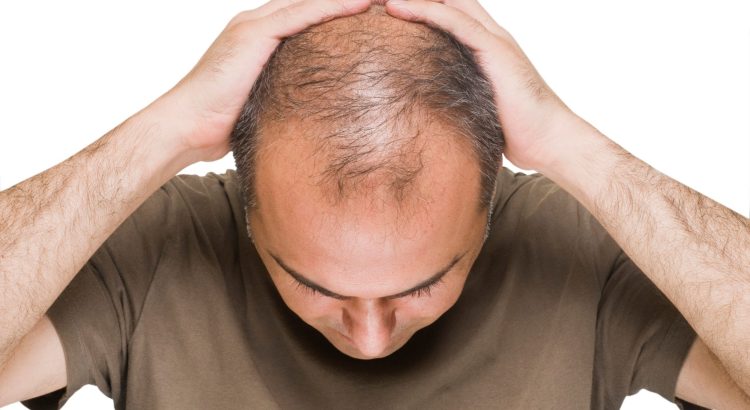Contents;
Understanding Androgenetic Alopecia
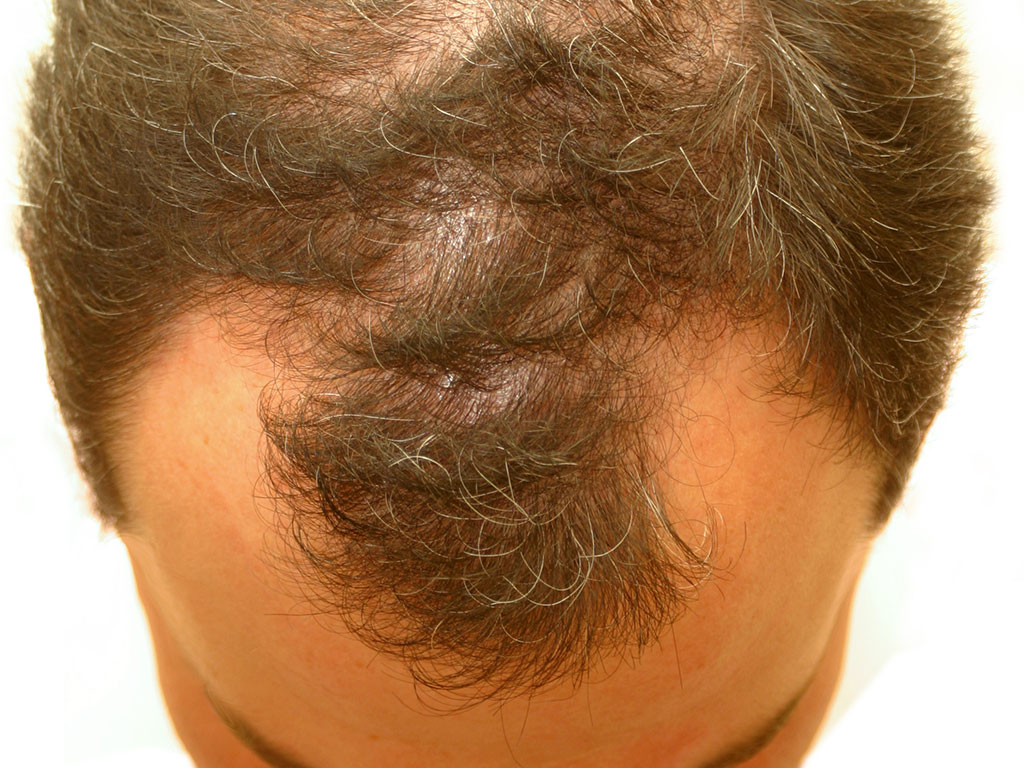
Androgenetic Alopecia, also known as male or female pattern baldness, is the most common form of hair loss, affecting millions of people worldwide. It is a hereditary condition characterized by gradual thinning of hair and eventual baldness. This condition can have a major impact on an individual’s self-esteem and confidence, leading them to seek various treatment options. Understanding the causes, symptoms, and available treatments for Androgenetic Alopecia is crucial in managing and preventing further hair loss.
Causes of Androgenetic Alopecia:
Androgenetic Alopecia is primarily caused by a combination of genetic and hormonal factors. It is influenced by the presence of dihydrotestosterone (DHT), a hormone derived from testosterone. Individuals with a genetic predisposition to Androgenetic Alopecia have hair follicles that are sensitive to DHT. Over time, DHT causes the miniaturization of hair follicles, leading to thinner and shorter hair strands. The exact genetic component behind this condition is still being studied, but it is believed to involve multiple genes.
Symptoms of Androgenetic Alopecia:
The first noticeable symptom of Androgenetic Alopecia is typically the gradual thinning of hair on the crown or top of the head. In men, this often results in a receding hairline and bald spots. In women, the hair thinning is more diffuse and spread evenly across the scalp, with the hairline usually preserved. The affected hair follicles produce increasingly finer and more fragile hair strands, until they stop producing hair altogether. It is important to note that Androgenetic Alopecia does not cause hair loss on other parts of the body.
Treatment Options for Androgenetic Alopecia:
There are several treatment options available for Androgenetic Alopecia, ranging from medications to surgical procedures. Medications such as minoxidil and finasteride can help slow down the progression of hair loss and stimulate hair regrowth. These medications work by either promoting blood flow to the hair follicles or inhibiting the production of DHT. Topical solutions, such as medicated shampoos and sprays, can also be used to nourish the scalp and strengthen the hair strands.
In cases where non-surgical options are ineffective, hair transplantation can be considered as a last resort. This surgical procedure involves removing hair follicles from a donor site and implanting them into the balding areas. Hair transplantation provides a more permanent solution, restoring a natural-looking hairline and increasing hair density. However, it is important to consult with a qualified and experienced surgeon before undergoing this procedure.
In conclusion, Androgenetic Alopecia is a common form of hair loss that can significantly impact an individual’s confidence and self-esteem. Understanding the causes and symptoms of this condition is essential in managing and preventing further hair loss. With the availability of various treatment options, individuals experiencing Androgenetic Alopecia can take steps towards regaining their hair and confidence.
Current Treatment Options
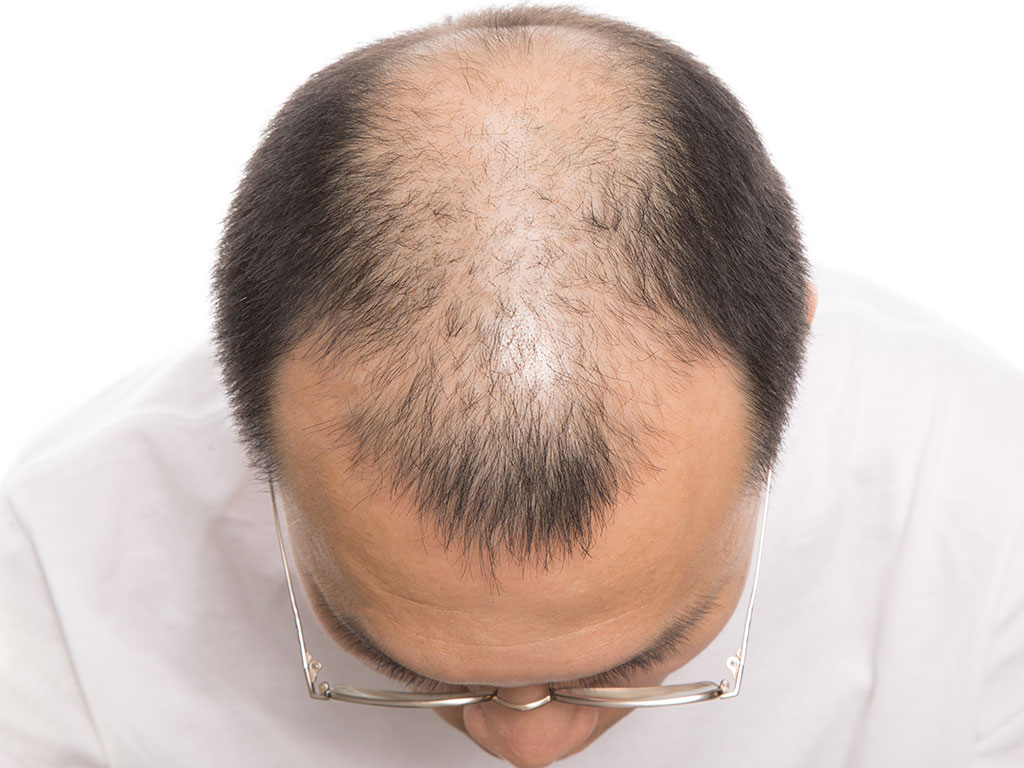
Androgenetic Alopecia, commonly known as male pattern baldness, is a condition that affects a large percentage of men worldwide. While it is more prevalent in men, it can also affect women. Androgenetic Alopecia is primarily caused by a combination of genetic and hormonal factors. It is characterized by a progressive hair loss, starting from the frontal and vertex regions of the scalp.
Fortunately, there are several current treatment options available to combat Androgenetic Alopecia. These options range from medications to topical solutions and even surgical procedures. It is essential to consult with a dermatologist or hair specialist to determine the most suitable approach for your specific needs.
Medication:
One of the most common treatment options for Androgenetic Alopecia is medication. Two FDA-approved drugs for treating this condition are minoxidil and finasteride. Minoxidil, available as a topical solution or foam, is applied directly to the scalp and stimulates hair growth. Finasteride, on the other hand, is an oral medication that inhibits the conversion of testosterone into dihydrotestosterone (DHT), a hormone responsible for hair loss.
Topical Solutions:
Aside from minoxidil, there are other topical solutions that can help in slowing down hair loss and promoting hair regrowth. These solutions can contain various active ingredients, such as ketoconazole and saw palmetto, which have shown to have positive effects on hair growth. Additionally, some shampoos and conditioners contain ingredients that nourish the scalp and support healthy hair growth.
Surgical Procedures:
When other treatment options fail or when significant hair loss has occurred, hair transplantation can be considered as a last resort. This procedure involves removing healthy hair follicles from donor sites and implanting them into areas with hair loss. Hair transplantation can provide permanent and natural-looking results, but it requires careful planning and consideration.
In conclusion, Androgenetic Alopecia can be a distressing condition for both men and women. However, with the availability of current treatment options, it is possible to slow down hair loss and promote hair regrowth. Whether it is medication, topical solutions, or surgical procedures, consulting with a healthcare professional is crucial in determining the best course of action for managing Androgenetic Alopecia.
Medication For Androgenetic Alopecia
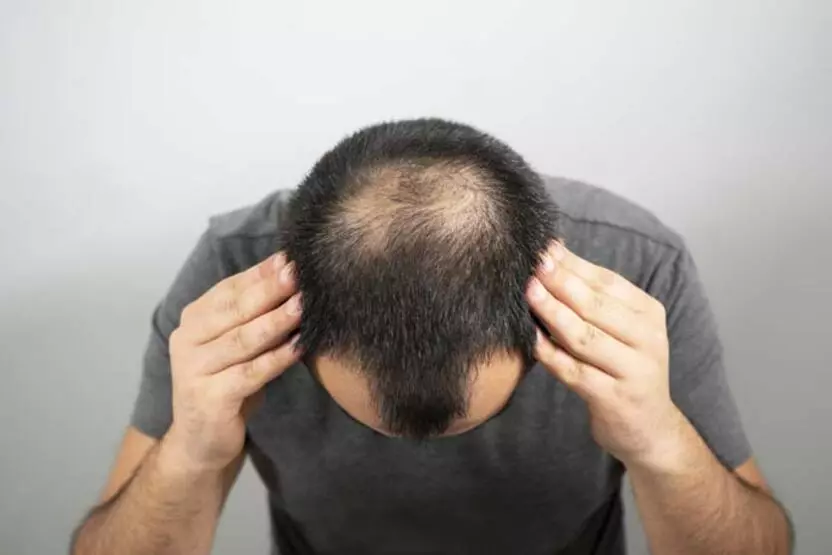
Androgenetic Alopecia, also known as male pattern baldness or female pattern baldness, is a common form of hair loss that affects both men and women. It is characterized by a gradual thinning of the hair on the scalp, which can eventually lead to complete baldness. While there is no known cure for Androgenetic Alopecia, there are several medications available that can help slow down the progression of hair loss and promote hair regrowth.
One of the most commonly used medications for Androgenetic Alopecia is minoxidil. Minoxidil is a topical solution that is applied directly to the scalp. It works by widening the blood vessels in the scalp, which allows more oxygen, nutrients, and blood flow to reach the hair follicles. This can help stimulate hair growth and prevent further hair loss. Minoxidil is available over the counter and is typically applied twice daily for optimal results.
Another medication commonly prescribed for Androgenetic Alopecia is finasteride. Finasteride is an oral medication that works by reducing the production of dihydrotestosterone (DHT), a hormone that is known to contribute to hair loss. By blocking the conversion of testosterone to DHT, finasteride can help slow down hair loss and promote hair regrowth. It is important to note that finasteride is only approved for use in men, and women of childbearing age should avoid handling crushed or broken tablets due to the potential risk to a developing male fetus.
Topical Solutions For Hair Loss
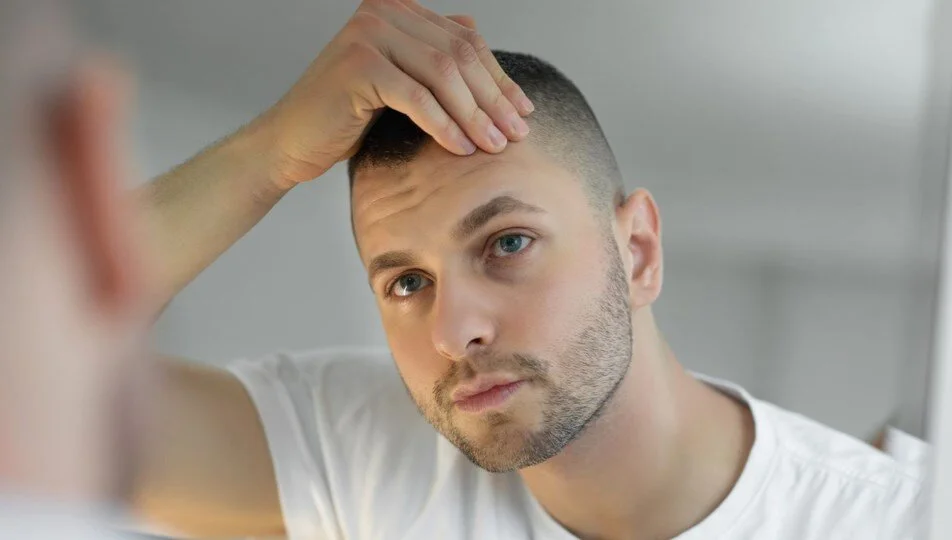
When it comes to combating hair loss, there are various treatments available on the market. One popular option is the use of topical solutions, which are applied directly to the scalp. These solutions contain active ingredients that can help to stimulate hair growth and prevent further hair loss. In this blog post, we will explore some of the top topical solutions for hair loss and discuss their effectiveness.
1. Minoxidil: Minoxidil is one of the most commonly used topical solutions for hair loss. It is available over-the-counter and can be used by both men and women. Minoxidil works by dilating the blood vessels and promoting blood flow to the hair follicles. This can stimulate hair growth and help to slow down hair loss. It is typically applied twice a day and may take several months to show noticeable results.
2. Finasteride: Finasteride is another popular topical solution used to combat hair loss. Unlike Minoxidil, Finasteride is available in prescription form and is primarily used by men. It works by inhibiting the production of dihydrotestosterone (DHT), a hormone that can contribute to hair loss. By reducing DHT levels, Finasteride can help to prevent further hair loss and promote hair regrowth. It is generally applied once a day and may also take several months to show significant results.
| Topical Solutions for Hair Loss: |
|---|
|
|
3. Ketoconazole: Ketoconazole is a topical antifungal medication that is sometimes used as a treatment for hair loss. It works by reducing the production of DHT, as well as fighting scalp inflammation and dandruff, which can contribute to hair loss. While ketoconazole may not be as effective as Minoxidil or Finasteride in stimulating hair growth, it can still be a beneficial addition to a hair loss treatment regimen.
In conclusion, topical solutions can be an effective option for individuals experiencing hair loss. Minoxidil, Finasteride, and ketoconazole are all popular choices and have shown promising results in promoting hair regrowth and preventing further hair loss. However, it is important to note that individual results may vary, and it is advisable to consult with a healthcare professional before starting any treatment for hair loss.
Hair Transplantation As A Last Resort
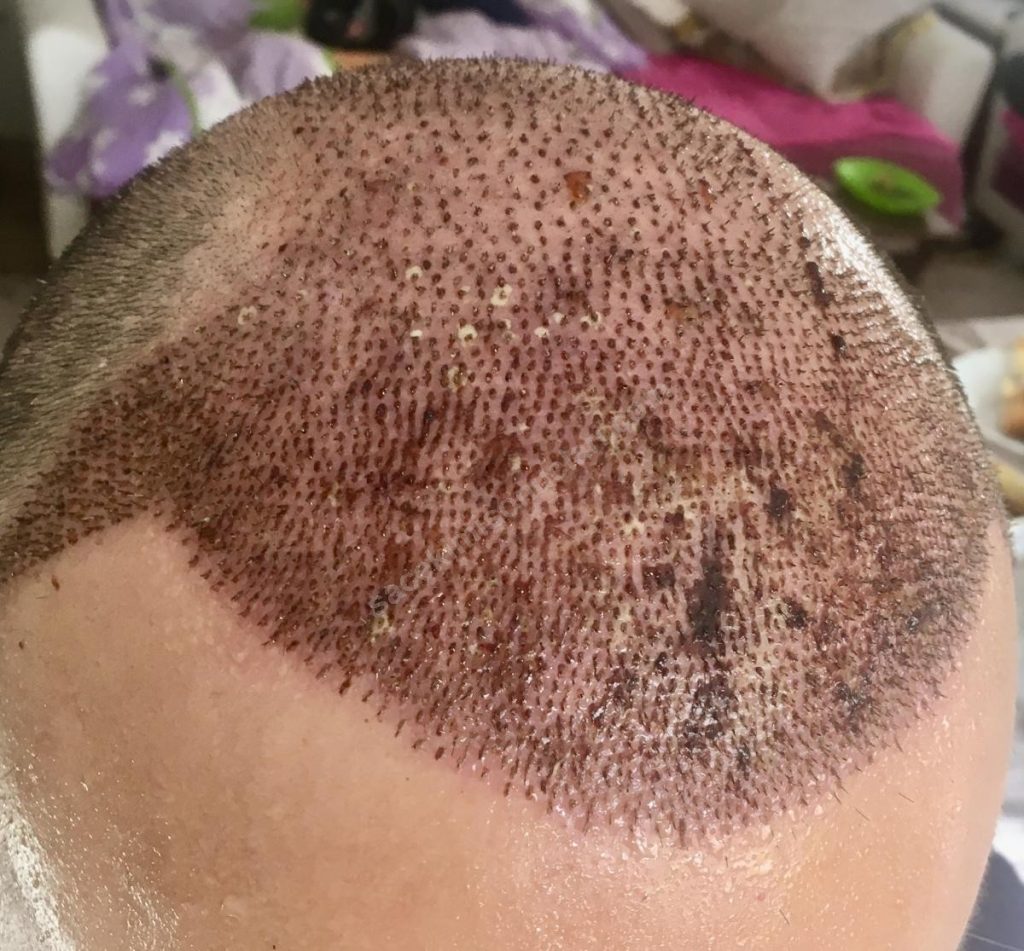
When it comes to dealing with hair loss, there are various treatment options available in the market. From medications to topical solutions, individuals have a wide range of choices. However, in some cases, when all other options fail to produce satisfactory results, hair transplantation may be considered as a last resort. Hair transplantation is a surgical procedure that involves removing hair follicles from one part of the body (often referred to as the “donor site”) and implanting them in areas where hair loss has occurred (known as the “recipient site”).
Androgenetic Alopecia, also known as male or female pattern baldness, is the most common form of hair loss, affecting millions of people worldwide. It is a genetic condition that causes gradual hair thinning and baldness. While there are several non-surgical options available to treat and manage this condition, such as medications and topical solutions, they may not always provide the desired results. This is where hair transplantation comes into play.
The process of hair transplantation involves the use of advanced techniques to extract healthy hair follicles from the back or sides of the scalp, where hair growth is typically unaffected by Androgenetic Alopecia. These follicles are then carefully transplanted into the areas of the scalp that are affected by hair loss. The procedure is usually performed under local anesthesia and can take several hours to complete, depending on the extent of hair loss and the number of grafts needed.
Lifestyle Changes To Prevent Hair Loss
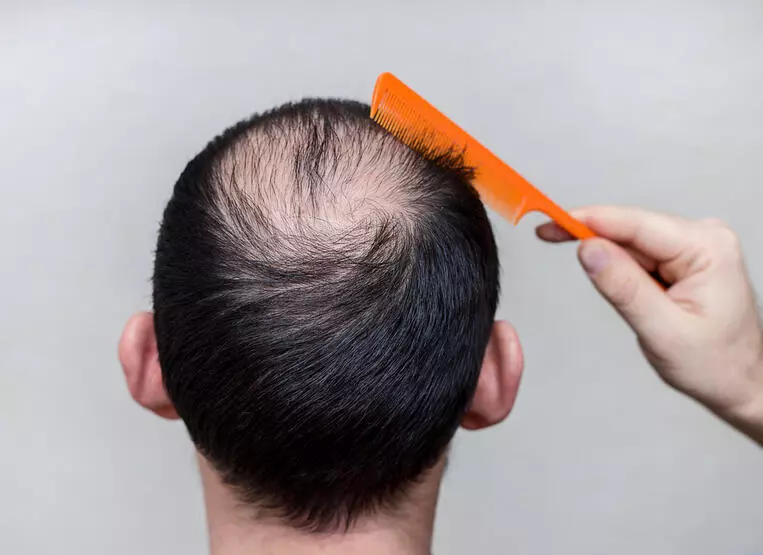
Androgenetic Alopecia, commonly known as male pattern baldness, is a condition that affects both men and women. While genetic factors play a significant role in its development, certain lifestyle changes can help prevent hair loss. By adopting a healthy lifestyle and following some simple guidelines, individuals can potentially reduce the risk of hair loss and promote hair growth.
1. Maintain a Balanced Diet:
Adequate nutrition is crucial for maintaining healthy hair. Consuming a well-balanced diet rich in vitamins, minerals, and proteins is essential. Foods like fruits, vegetables, whole grains, lean meats, and low-fat dairy products provide the necessary nutrients for strong and healthy hair. Additionally, including healthy fats like avocados, nuts, and seeds in the diet can help nourish the hair follicles.
2. Avoid Excessive Heat and Styling:
Excessive use of heat styling tools such as hairdryers, curling irons, and straighteners can damage the hair shaft and lead to breakage. It is important to limit the use of such tools and use heat protectant products before styling. Opting for hairstyles that do not require excessive heat or tight pulling can also help prevent hair loss.
3. Manage Stress Levels:
Stress can contribute to hair loss by disrupting the hair growth cycle. Practicing stress management techniques like meditation, deep breathing exercises, and engaging in activities that promote relaxation can help reduce stress levels. Getting an adequate amount of sleep and maintaining a balanced work-life schedule are also important in preventing hair loss.
4. Avoid Smoking and Excessive Alcohol Consumption:
Smoking and excessive alcohol consumption can have a negative impact on hair health. Smoking restricts blood flow to the hair follicles, depriving them of essential nutrients. Similarly, excessive alcohol intake can lead to nutritional deficiencies that affect hair growth. Quitting smoking and limiting alcohol intake can promote overall hair health.
5. Protect Hair from Sun and Environmental Damage:
Excessive exposure to the sun’s harmful UV rays can damage the hair shaft and weaken the hair follicles. It is important to protect the hair by wearing a hat or using a sunscreen specifically designed for the hair. Additionally, exposure to environmental pollutants and chlorine from swimming pools should be minimized to prevent hair damage.
Conclusion:
While genetic factors may play a significant role in hair loss, making certain lifestyle changes can help prevent or minimize its occurrence. Maintaining a balanced diet, avoiding excessive heat and styling, managing stress levels, quitting smoking and limiting alcohol consumption, and protecting the hair from sun and environmental damage are some of the strategies that individuals can adopt to promote hair health and prevent hair loss.
Alternative Therapies For Androgenetic Alopecia
Androgenetic Alopecia, also known as male or female pattern baldness, is a common form of hair loss that affects millions of people worldwide. It is characterized by a gradual thinning of the hair and is primarily caused by genetic factors. While there are several conventional treatment options available for Androgenetic Alopecia, some individuals prefer to explore alternative therapies in their quest to regrow and maintain their hair.
One alternative therapy for Androgenetic Alopecia is the use of essential oils. Essential oils such as lavender, rosemary, peppermint, and cedarwood have been found to have potential benefits in promoting hair growth. These oils can be diluted with a carrier oil and applied directly to the scalp, massaged in for a few minutes, and left on overnight. Regular use of essential oils may help stimulate hair follicles and improve blood circulation to the scalp.
Another alternative therapy is acupuncture. This ancient Chinese practice involves the insertion of thin needles into specific points on the body to promote healing and balance. According to some studies, acupuncture may help reduce hair loss and promote hair growth in individuals with Androgenetic Alopecia. The needles used in acupuncture stimulate blood flow to the scalp, which can nourish hair follicles and promote hair regrowth.
| Alternative Therapies for Androgenetic Alopecia | |
|---|---|
| Essential oils: | lavender, rosemary, peppermint, cedarwood |
| Acupuncture: | ancient Chinese practice, promotes healing and balance |
Additionally, some individuals have turned to herbal supplements to address their hair loss concerns. Saw palmetto, a plant extract, is believed to inhibit the enzyme that converts testosterone into dihydrotestosterone (DHT), which is thought to contribute to Androgenetic Alopecia. Other herbal supplements such as ginkgo biloba, green tea extract, and saw palmetto may also have potential benefits in reducing hair loss and promoting hair growth. However, it is important to consult with a healthcare professional before starting any herbal supplement regimen.
In conclusion, while there are various conventional treatment options available for Androgenetic Alopecia, alternative therapies offer potential alternatives for individuals seeking natural approaches to address their hair loss concerns. Essential oils, acupuncture, and herbal supplements are just a few examples of alternative therapies that have been explored. It is important to remember that individual results may vary, and it is always best to consult with a healthcare professional before trying any alternative therapy.
Smilar Contents;
All Details of Hair Transplantation
What is FUE Hair Transplant Method?
Tips for a Successful Hair Transplant Recovery
FAQs About FUE Hair Transplantation
